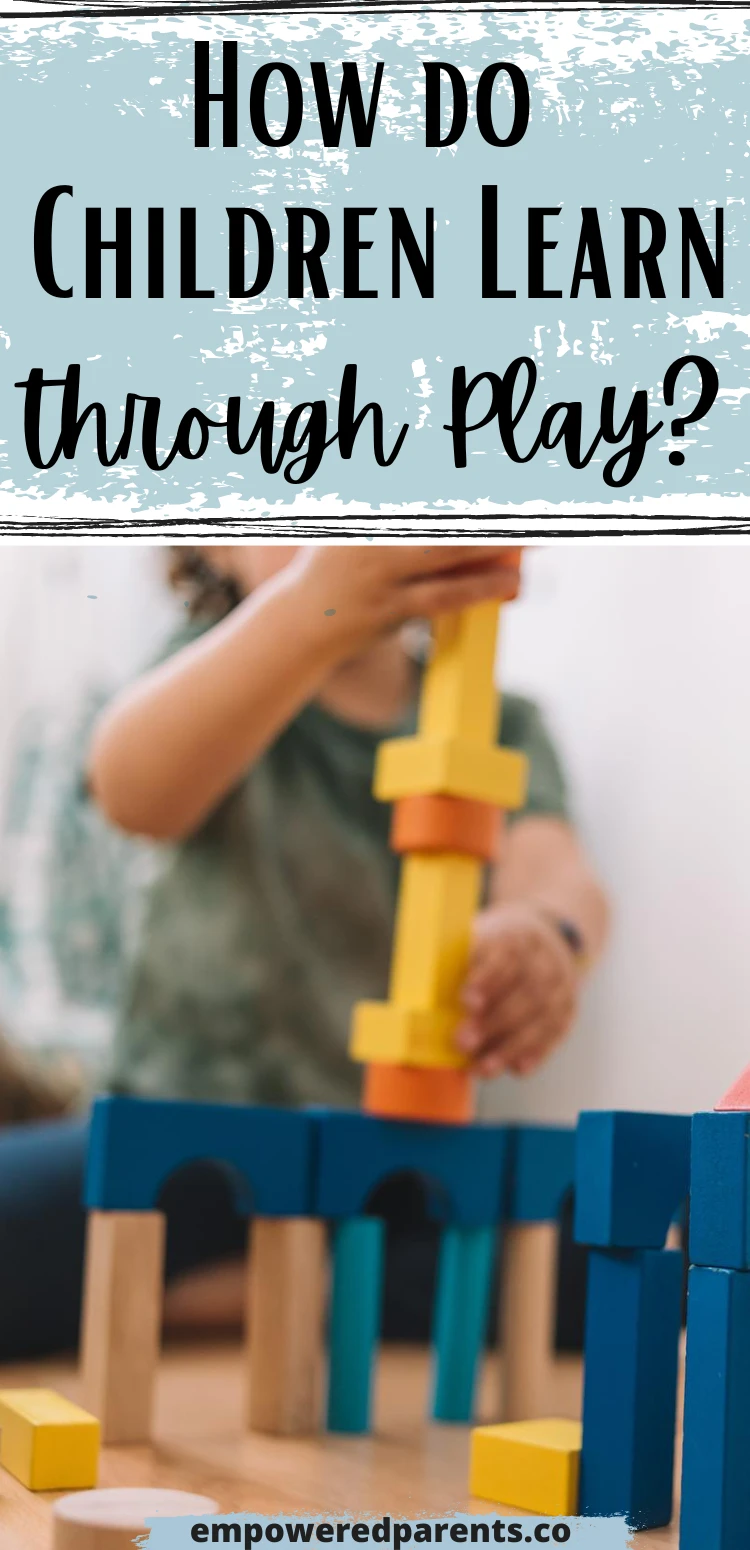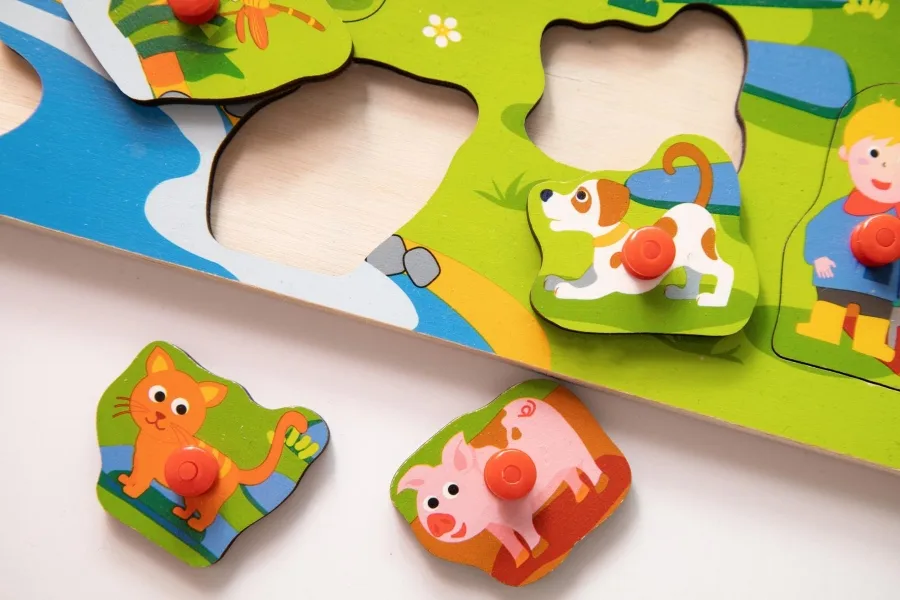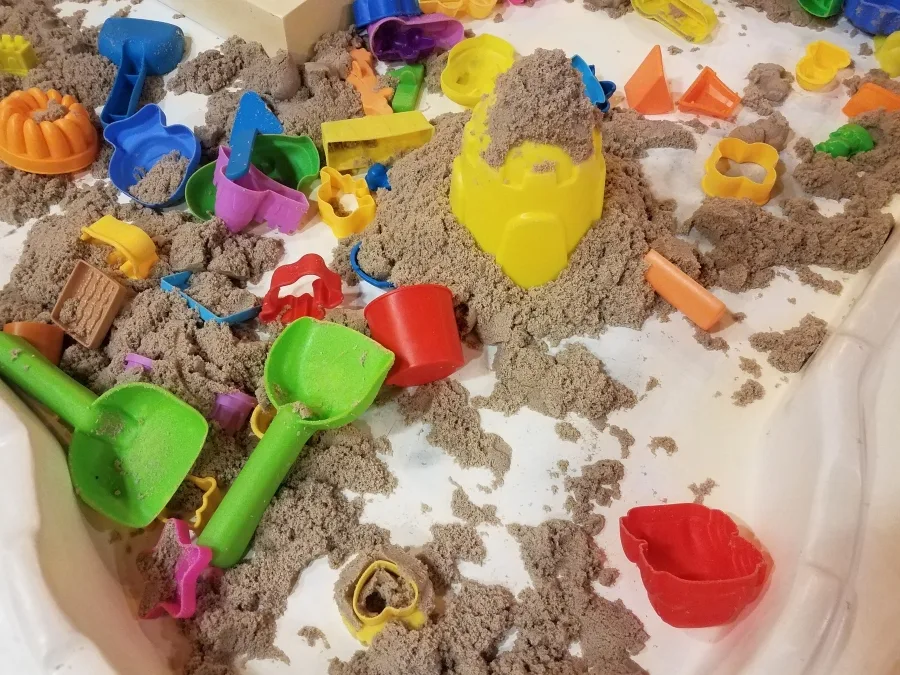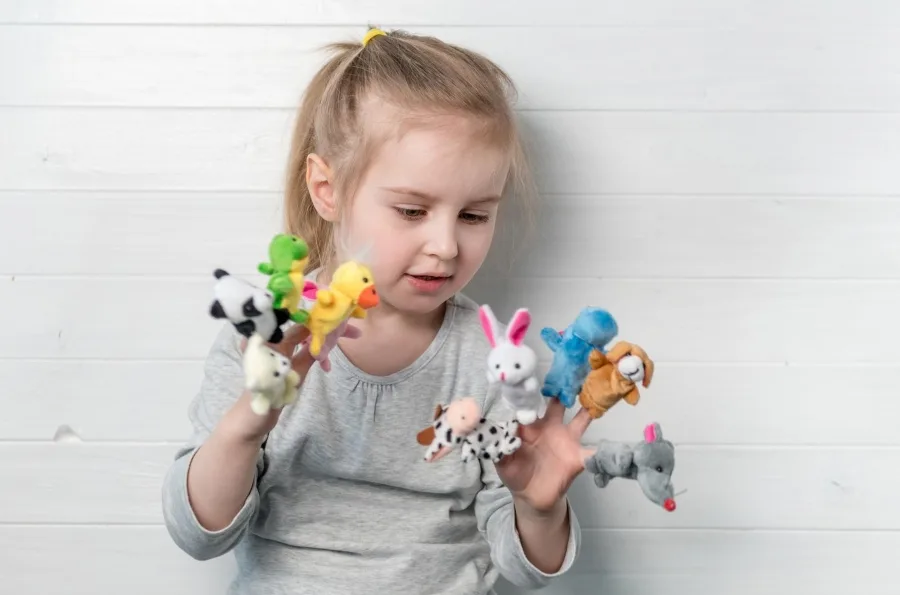Early childhood is a time of immense learning and discovery. As long as children are playing, they are learning.
To a young child, play isn’t a break from learning, it is learning.
Jean Piaget called play the “work of childhood” and many other theorists such as Lev Vygotsky, Maria Montessori, Mildred Parten, Friedrich Froebel and Rudolf Steiner stressed its importance.
There is so much research on learning through play, but to keep it simple, this article explains many practical ways children learn as they play.

What Do Children Learn Through Play?
It is impossible to capture a complete list of what children are actually learning while playing. They pick up a wide range of fundamental skills; everything from developing balance to building pre-academic skills needed to learn to read and write.
During play, children develop holistically – socially, emotionally, physically and cognitively.
Through play children:
- Solve problems
- Increase their vocabulary
- Learn cause and effect
- Develop sound awareness and pre-reading skills
- Refine the small muscles needed for writing
- Develop their large muscles, core strength, balance, directionality, etc.
- Develop a healthy, active body
- Lengthen their attention span
- Gain knowledge
- Learn to think critically
- Build confidence
- Make sense of their world and act out the adult world
- Express their emotions
- Pick up science and maths concepts
- Resolve conflicts
- Build communication and social skills
- Form opinions and question things
- Develop Imagination and creativity
- Develop early academic skills
These are just a few examples of the benefits of learning through play in the early years. There are many more.
What is an Example of Learning Through Play?
Here are some practical learning through play examples:
Building Puzzles
Handling puzzle pieces develops children’s fine motor skills (by strengthening and controlling the finger muscles). They also build eye-hand coordination and visual-motor integration, which is necessary for writing later on.

Working with pieces of different shapes develops visual perception – the brain’s ability to make sense of what it sees – which is essential for learning to read.
Puzzles are great for lengthening attention span and stimulating the brain. Kids also learn perseverance.
Playing with Sand and Water
Sand and water play is not only good fun, but is also the perfect place to learn maths and science. Kids discover capacity as they fill and empty containers, pour from one cup to another or realize that the tall, thin bottle holds less water than the short, wide one.
If their mud cake keeps collapsing they will problem-solve as they discover they need more water to make the sand firmer, and they learn how the properties of sand change as it mixes with different quantities of water (science).
When a friend joins, a child needs to make “one more” cake, or they might compare how “tall” or “short” their castles are, or count if there are enough candles on the pretend cake, thus building their number concept, vocabulary and understanding of concepts.
The opportunities for learning with sand and water are endless. The water table is the perfect place to discover which objects float and sink, and which substances dissolve.

Painting at an Easel
A simple activity like painting at an easel is great for developing midline crossing, as children will cross the middle of their bodies as they stretch over to paint the entire sheet of paper.
Being able to cross the midline is important for reading and writing.
A few more benefits of painting are developing fine motor skills, visual perception, creativity and expressing emotions in a healthy way.
Playing with Puppets
Playing with puppets is a wonderful way to develop language, act out social scenarios and make sense of the complex adult world. Children can learn about emotions from puppets.

Making DIY puppets is a good opportunity to practise cutting, sticking and other fine motor skills.
Singing Songs and Rhymes
Singing rhymes might seem like just an entertaining pastime, but music is a crucial part of early childhood development.
While reciting simple songs and rhymes, kids learn to distinguish sounds (auditory awareness) and to identify rhyming words. They build auditory memory as they memorize the words.
Children don’t just pick up new vocabulary from songs, they also learn grammar, parts of speech and sentence construction.
All of the above are crucial for learning to read and write.
During action rhymes, kids can develop gross motor skills and learn to follow instructions. Singing is even good for breathing and strengthens the respiratory muscles. [source]
Many songs teach children about sequencing, and concepts such as counting forwards and backwards.
And then there’s also the musical side. Children can learn musical concepts such as tempo and beat, develop a love and appreciation for music, and even build musical talent.
Rolling Down a Hill
Take a look at something as simple as children rolling down a hill during pretend play. This movement stimulates the vestibular system, which is responsible for balance and for sensing where our bodies are situated in space. It is located in the inner ear.

The better this system is stimulated, the better a child will be able to carry out complex movements later on.
Playing a Game of Tag
During a game of tag, kids build speed and the ability to stop quickly and change direction. They develop what is called position in space, which helps them to understand where their bodies are so they don’t knock into others while playing.
Helping in the Kitchen
Your children are learning maths skills while helping you prep dinner. Get them to set the table for the right number of people, bring you 4 medium-sized potatoes, fold the serviettes into triangles, set the oven to the right temperature, and help you measure the quantity of stock to add to the soup.
They can help you spread, cut veggies and stir to strengthen the finger muscles.
The opportunities are endless, especially if you build their vocabulary at the same time.
Building With Blocks
While playing with blocks, kids use their imagination as they create and construct.
They solve problems (perhaps their structure keeps collapsing) and they develop an understanding of numbers (placing two more blocks on one tower to make it match the other) and comparisons.

In fact, you can see a child’s maturing cognitive understanding as they progress through the stages of block play. A baby might try to eat a block, a toddler will make a simple tower at first, then place two blocks down with one on top to make a ‘bridge’, later forming a closed ‘circuit’ with the blocks. Older children will build complex constructions and name them.
It is quite fascinating to watch.
Drawing Pictures
The simplest way to get your children ready for writing is to let them draw. They don’t need outlines or formal instruction – just blank paper and pencils or crayons.
Drawing builds fine motor control, pencil grip and creativity at the same time.
As you can see from the few examples above, there is learning in all play-based activities.
How Do You Teach Through Play?
Whether you’re a teacher, parent or guardian, you can teach your kids through play by following some simple principles:
- Give children lots of time for free play. Avoid filling their time with adult-guided activities.
- Adults can guide or suggest activities, but should not give too much direction. The more freedom the child has in an activity, the greater the learning potential. (There is a time and place for prescriptive activities too – like trying to make Mother’s Day cards with an entire class!)
- Set up an environment that is conducive to learning and that is inviting.
- Provide a variety of materials and equipment for play, including natural materials.
- Offer educational toys, (and less gimmicky toys).
- Fill play areas with books, puzzles and other educational games.
- Set up provocations for children, such as leaving out different fabrics and seeing what children do with them.
- Encourage children to play outdoors as much as possible.
- Provide toys/equipment that are open-ended. A large box can become a doll’s house, be turned into a pirate ship, or be used in an obstacle course.
- Use open-ended questions to encourage children to think while they play.
- Provide lots of sensory experiences.
- Try not to interfere too much when children are trying to solve a problem or work out a conflict.
- Incidental learning often happens as a result of good planning. Sometimes children use an open space with nothing in it but their imagination to start playing, other times they think of ideas based on how a teacher or parent has set up their environment, or the materials they find in a space.
- When working out a daily plan for children in a school or home school, set aside time for music and movement rings, art activities, stories, discussions, quiet play (such as puzzles and card games) and lots of free play indoors and outdoors.
I hope you’ve enjoyed reading about the importance of play-based learning.
Are you a preschool teacher or working in Early Childhood Education? Would you like to receive regular emails with useful tips and play-based activity ideas to try with your children? Sign up for the newsletter!
Here is more info about the:
